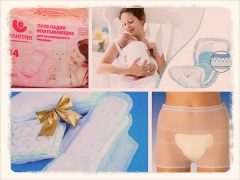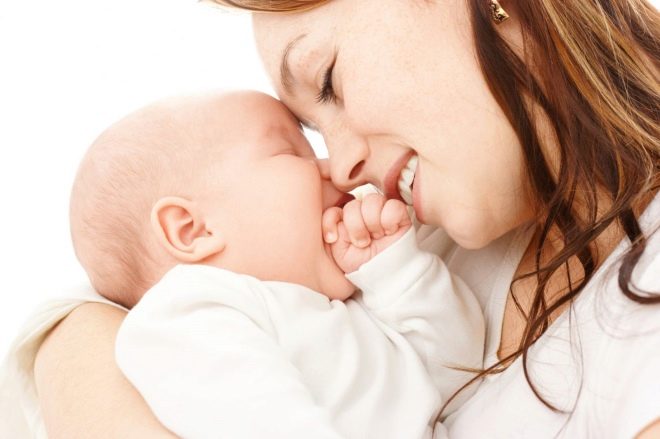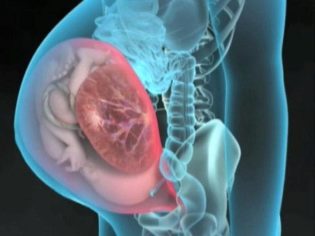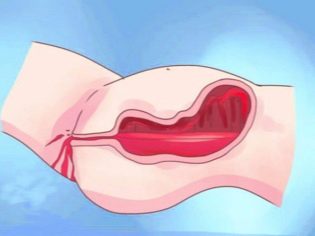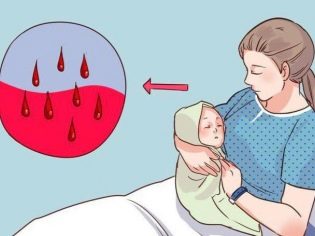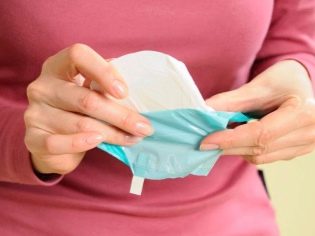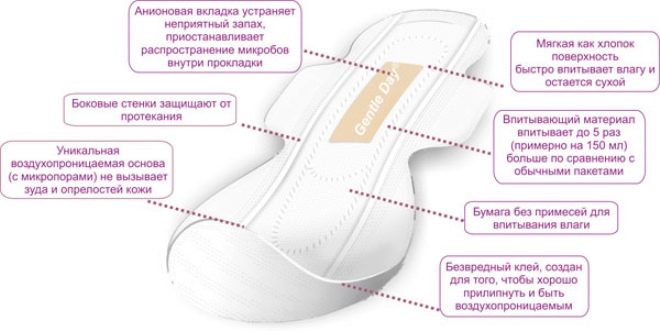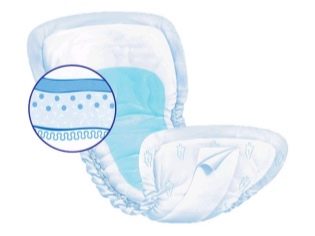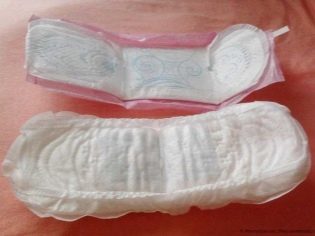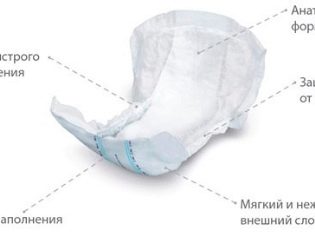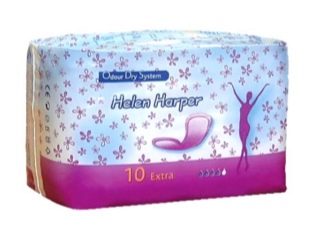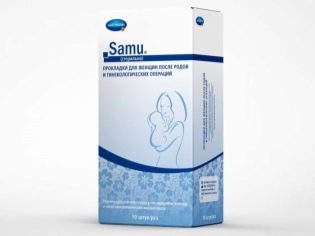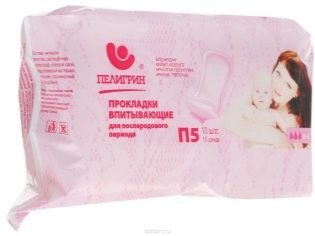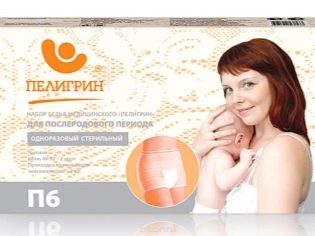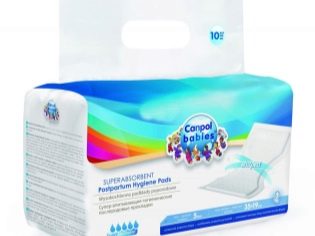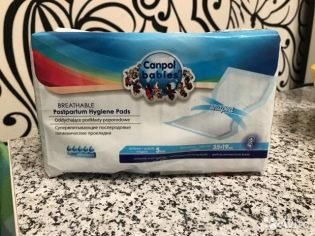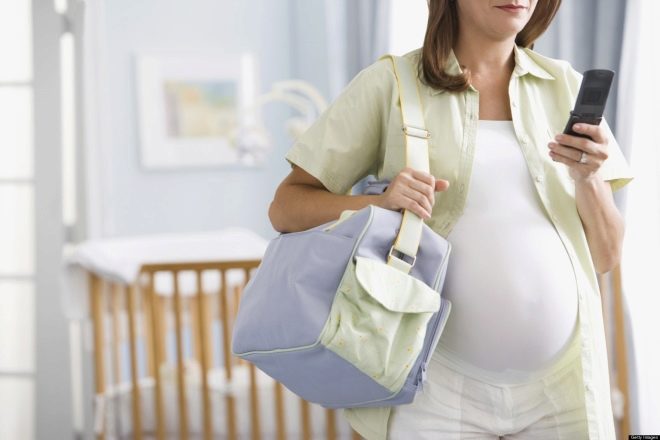What pads for pregnant women choose?
Feminine hygiene pads can rightly be considered one of the most useful and most ancient inventions of mankind. But we are accustomed to daily or even monthly pads are not suitable in the postpartum period.
For pregnant women, completely different hygienic means are required, which is due to the physiology of the recovery period after the birth of the baby. In this article we will talk about how to choose pads for women in labor and what requirements they must meet.
Purpose
Ordinary pads, which can be purchased at any store or pharmacy, are not suitable for the early postpartum period. The fact is that after childbirth from the genital tract, a greater volume of discharge than during menstruation.
These secretions are called lochia and consist mainly of blood. It is excreted in large quantities from the blood vessels, which are impaired when the placenta are separated from the uterine wall, because during the period when the baby was born, the “baby seat” and the reproductive organ are tightly fused. As the placental wound heals, clots appear in the secretions, and then the serous fluid. This composition makes Lochia potentially dangerous to the health of the puerperal.
From the menstrual flow, they differ in the absence of enzymes and endometrial particles. But the abundance of red blood cells makes Lochia a favorable breeding ground for pathogenic bacteria. If this process begins, it invariably leads to severe inflammatory consequences.
Therefore, the basic requirements that must be met postpartum pads - increased ability to absorb and retain fluid and sterility. Therefore, in the first few days after birth, it is recommended to use sterile hospital bed racks - they are washed and necessarily placed in the sterilizer.
At the end of the second day, the woman can begin to use the hygiene products that she took with her to the hospital. Better if these are special puerperal pads. It is a convenient means of hygiene that meets the key requirements mentioned above.
If the pads are chosen correctly, they will provide comfort to the puerperal, maximally anatomically adjusting to the natural forms and curves of the perineum. They are soft, their surface does not cause sweating and debate, and therefore they can be used even after an episiotomy performed during childbirth - dissection of the perineum.
Their main advantage is increased protective abilities. If you frequently change the pads after delivery, the likelihood of infection and inflammation will be reduced. Hygienic products for pregnant women are hypoallergenic, they do not cause irritation, rash and swelling in the perineum.
What are the differences from the usual?
If we compare the postpartum pads with the usual, we can note a number of distinctive features.
- The size - hygiene products for women in labor are longer and wider, their external adhesive surface is much wider than with most ordinary gaskets. The size in this case is important, since the increased width prevents the flow even in the supine position.
- Material - the outer top layer in special pads always consists of materials with a high degree of breathability, which is important for drying gaps and seams on the perineum, if any.
- Filler - able to absorb four glasses of liquid. This ability can not boast the usual gaskets.Some types of postpartum hygiene even able to absorb small and medium-sized blood clots.
- Impregnation - Most postpartum pads are impregnated with special anti-inflammatory compounds that increase the effectiveness of antibacterial prophylaxis.
But the "droplets", the number of which women determine the absorbent capacity and purpose for the discharge of different abundance, in special hygiene products are the same as in the usual. This greatly facilitates the task of choice.
Kinds
Gaskets for pregnant women differ not only in the name and degree of absorbency, but also in their construction. Today, the following offers are on the market for relevant products:
- anatomical pads - the maximum repetitive curves of the perineum;
- urological pads - perfectly absorb and lochia, and urine when it is leaking, have enhanced bactericidal properties;
- disposable postpartum panties - they have already inserted a wide and long gasket. This is convenient because the hygiene will not need to be held and straightened.
The woman can choose and take with her on delivery any laying. Questions arise only in relation to disposable pants. They are much more expensive than other types of products, and they will not always be used. For example, after a cesarean section, such panties will interfere, exerting pressure on the area of the dressing and the postoperative suture under it.
Browse popular brands
Among the variety of special pads for pregnant women to navigate can be difficult. Therefore, we have compiled a small rating of hygienic products, based on feedback from pregnant women.
In it the names are arranged in descending order of positive ratings, that is, in the first place are the products with the maximum number of positive reviews. Close the list of gaskets, which women put an honest "top three" of the possible five points.
Helen harper
In the European market, this brand of postpartum sanitary pads for women over the past decades occupies a leading position. They are very convenient to use due to small elastics that replace the usual "wings".
Adhesive tape on the outside does not peel off and does not peel off from the laundry, it is very reliable, which prevents the pad from slipping, leaking. The composition of the products does not include perfume fragrances, but this does not affect the result at all - the gasket not only perfectly absorbs lochia, but also remarkably masks unpleasant blood smells.
Seni
The coating is soft, but the manufacturers do not offer anything special - they are confident, reliable and generally accepted “classics of the genre”. A big plus of such products is that they belong to the category of urological, respectively, a woman is much better protected from pathogenic bacteria due to a special bactericidal sorbent.
Material in the composition of only natural, diaper rash and sweating in the crotch area while observing the rules of use are practically excluded.
For the price, these gaskets are considered quite average, they are much cheaper than the previous ones, and this makes them even more attractive. The only negative is the absence of so-called “wings”, which is not convenient for all women.
Molimed
Like most products from the famous manufacturer Hartmann, these gaskets have one of the largest ranges of sizes and shapes. There are pads with “wings” and without them, there are super-powerful absorbent products, and there are pads that can be used at the very end of the rehabilitation period, when the amount of discharge will be minimal.
In this line of gaskets, you can find sterile products that are suitable for use in the very early postpartum period (if the maternity hospital administration does not cling too much to Soviet obstetric traditions and allows the puerperal woman to use not half a meter of diapers, but sterile means).
The minus of the gaskets is the presence of a rather dense outer layer, which creates the likelihood of diaper rash and soak in the area of the seams, if any. After episiotomy and perineal tears are not the best choice.
Samu
Such products are large, they are very good for the early period after childbirth, when the discharge from women is abundant and heterogeneous. These hygiene products for women in childbirth are sterile, not having a dense airtight layer, and therefore permissible to use immediately after birth, even if there were tears or a perineal incision.
The lack of concrete pads is that they have neither side “wings”, nor a sticky layer from the side of the linen. They are difficult to maintain when walking in a static position, and therefore unpleasant occurrences are not excluded. Their price is quite high. There is no choice of sizes, gaskets are available in one dimensional solution.
"Peligrin"
Cheap and "angry" domestic version. The price is available to all, in this group of products it is one of the lowest. The pads are quite large and thick, which gives them a greater ability to absorb. The brand line has several dimensional solutions.
Hygiene products "breathe" well, which makes possible their use after tears or surgical dissection of the perineum. Do not contain allergens and perfumes.
The obvious disadvantages seen by women in labor are that the adhesive layer of the pads is very thin and unreliable. The lining is easily peeled off from the fabric of underwear, shifts, allows leakage. The gum, which the manufacturers have foreseen at the edges so that the hygienic means is better fixed, causes a completely different effect - it rubs, prevents to walk normally.
The product does not contain bactericidal sorbents. If the stitches heal slowly and poorly, it is better to use another brand of gaskets with increased antibacterial protection or urological products.
Canpol babies
These hygiene products for women in labor are highly soft and comfortable, but they deserve the least positive feedback from women solely for having a relatively small thickness for a large length. On the one hand, it seems quite comfortable to walk easily. But on the other hand - gaskets need to be changed more often. If other postpartum products can be changed every two hours, then products of this brand sometimes have to be changed every 40 minutes.
The disadvantage is somewhat compensated by the ingenuity and tact of the manufacturers, who made sure that the puerperal woman had two types of products - night and day.
Both those and others have a rather dense outer layer, which does not exclude the possibility of diaper rash and slower healing of the stitches. "Wings" are absent, and a sticky layer outside is only in the very center of the product, and therefore the gasket is fixed very insecurely.
Useful tips
Choosing hygiene products for the postpartum period, you should not buy them too much. Lochia will be abundant only during the first 3-5 days, then they will become moderate, and within a week they will gradually decrease in quantity.
For this period, it is enough to purchase 3 packs of puerperal pads. For the subsequent rehabilitation period, it will be possible to buy other pads and do it later, when the nature of the discharge and their quantity are understood, taking into account the individual characteristics of the postpartum period.
About postpartum pads can additionally be found in the following video.
